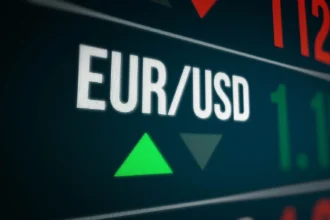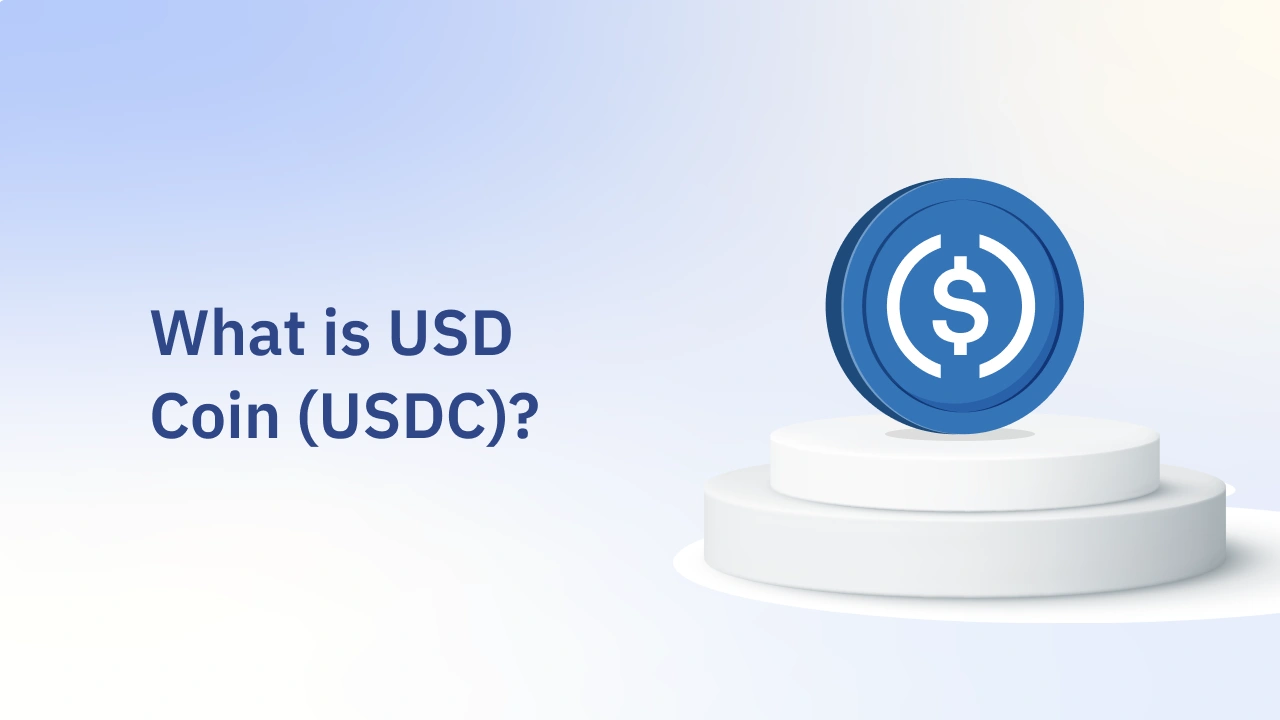In the ever-evolving world of cryptocurrencies, stablecoins have gained significant importance. Among the many stablecoins in the market, USD Coin (USDC) stands out as one of the most widely used and trusted digital currencies. It has become a key player in the ecosystem of digital assets, with a focus on providing stability and reliability within the volatile crypto market.
In this article, we will explore what USDC is, how it functions, its price prediction for 2025, and key trends and insights that could shape its future. Whether you’re a seasoned crypto investor or a newcomer, understanding USDC and its role in the crypto space is essential for anyone looking to navigate the world of cryptocurrencies.
What is USDC?
USD Coin (USDC) is a stablecoin, meaning its value is pegged to a stable asset—in this case, the US dollar. Each USDC token is backed 1:1 by a US dollar or an equivalent asset held in reserve, ensuring that its value remains relatively stable compared to the highly volatile nature of other cryptocurrencies like Bitcoin (BTC) and Ethereum (ETH).
USDC was launched in 2018 by Centre, a consortium consisting of Circle and Coinbase. It is an ERC-20 token based on the Ethereum blockchain, but it is also supported on other blockchains such as Solana, Algorand, and Tron, allowing for cross-chain interoperability. USDC has become one of the leading stablecoins in the market, with a market capitalization that ranks it among the top 10 cryptocurrencies by market cap.
How Does USDC Work?
USDC is issued by regulated financial institutions, and it undergoes regular audits to ensure that the reserves backing it are fully accounted for. The backing assets typically include cash and short-term US Treasury securities. These assets are held in regulated accounts to guarantee that each USDC is fully redeemable for a US dollar or its equivalent.
The process of minting and redeeming USDC is relatively straightforward:
- To mint USDC, users send USD to the issuing institution, which then issues the equivalent amount of USDC on the blockchain.
- Conversely, users can redeem USDC for USD by sending their tokens back to the issuer, which will then transfer the corresponding amount of USD to their bank account.
This process ensures that the value of USDC remains stable and is backed by real-world assets, providing a reliable store of value within the cryptocurrency ecosystem.
Why is USDC Important in the Crypto Ecosystem?
USDC plays a crucial role in the cryptocurrency ecosystem for several reasons:
- Stability in Volatile Markets: The primary purpose of USDC, like other stablecoins, is to provide stability in a market prone to high volatility. When the prices of cryptocurrencies like Bitcoin or Ethereum experience significant fluctuations, USDC offers a safe haven for traders and investors who want to preserve their value in the crypto space.
- Facilitating Transactions: USDC is widely used for facilitating transactions, especially in the decentralized finance (DeFi) space. Its stable value makes it ideal for lending, borrowing, and trading activities. Many decentralized exchanges (DEXs) and DeFi protocols use USDC as a primary asset for trading pairs, collateral, and liquidity.
- Cross-Border Payments: USDC allows for easy and efficient cross-border payments. Traditional banking systems often involve high fees and long processing times for international transfers, but with USDC, users can send money across the globe with minimal fees and in near-real-time.
- Interoperability: As an ERC-20 token, USDC is compatible with Ethereum and a range of other blockchains, making it highly versatile. Its availability on multiple platforms allows for easier access to various blockchain-based applications and services.
- Regulatory Compliance: USDC is issued by a regulated financial institution, Circle, which adheres to US regulations. This regulatory compliance adds a layer of trust and reliability to USDC, distinguishing it from other, less regulated stablecoins.
USDC vs. Other Stablecoins
While there are many stablecoins in the market, USDC is often compared to other prominent stablecoins, particularly Tether (USDT) and Dai (DAI). Here’s how USDC stacks up:
- USDC vs. Tether (USDT): Tether is the largest stablecoin by market capitalization and has been around longer than USDC. However, USDC is often seen as a more transparent and regulated stablecoin. While Tether has faced scrutiny regarding its reserve audits and legal challenges, USDC’s backing and reserves are regularly audited by third-party firms, providing more trust for users.
- USDC vs. Dai (DAI): Dai is a decentralized stablecoin that is not backed by fiat currency but is instead collateralized by cryptocurrency assets. While Dai offers more decentralization, it is subject to price fluctuations in the collateral assets, making it less stable than USDC, which is fully backed by USD reserves.
USDC Price Prediction for 2025
As a stablecoin, the price of USDC is designed to remain relatively constant at $1 USD. Unlike other cryptocurrencies, USDC does not experience significant price fluctuations. Its value is directly tied to the US dollar, so its price prediction for 2025 is essentially the same as it is today—$1 USD.
However, despite its stable value, several factors could influence the broader use and demand for USDC in the coming years, which could affect its role in the cryptocurrency market:
- Increased Adoption in DeFi: As the decentralized finance space continues to grow, the demand for stablecoins like USDC is likely to increase. USDC is already widely used in DeFi platforms for lending, borrowing, and yield farming, and this trend is expected to continue. As more users and institutions embrace DeFi, the demand for USDC could rise, potentially increasing its market capitalization.
- Regulatory Developments: The regulatory landscape for stablecoins is evolving. Governments worldwide are beginning to take a closer look at stablecoins, and any new regulations could affect the issuance and use of USDC. Positive regulatory developments could enhance USDC’s adoption, while stringent regulations could potentially limit its growth.
- Institutional Adoption: With major institutions exploring ways to integrate cryptocurrencies into their operations, USDC is likely to see increased adoption. Companies may choose USDC for cross-border payments, trading, and even as a reserve asset for their crypto portfolios. The more institutional adoption USDC gains, the greater its demand will be.
- Competition from Other Stablecoins: USDC faces competition from other stablecoins like Tether (USDT) and Dai (DAI). However, its regulatory compliance and transparency could give it an edge in the long term, especially as concerns over Tether’s reserve backing continue to surface.
Price Stability and Growth in the Market
While USDC’s price remains pegged to the dollar, its overall market capitalization could grow significantly as demand for stablecoins rises. As more users seek the safety and stability that USDC offers, its market cap may continue to increase, further solidifying its position as one of the top stablecoins.
Key Trends for USDC in 2025 and Beyond
Several key trends could shape the future of USDC in the coming years:
- Expansion of USDC’s Ecosystem: As USDC expands beyond Ethereum to other blockchains like Solana, Algorand, and Tron, its adoption in decentralized applications and smart contracts will continue to grow. This expansion could lead to wider usage across various blockchain ecosystems.
- Increased Use in Central Bank Digital Currencies (CBDCs): The rise of Central Bank Digital Currencies (CBDCs) could indirectly benefit USDC. As governments and central banks explore the concept of digital currencies, they may look to integrate or collaborate with stablecoins like USDC to facilitate digital payments.
- Stronger Regulatory Environment: As stablecoins become a more integral part of the global financial system, stronger regulations may be put in place. A clear regulatory framework for stablecoins could create a more secure environment for USDC and increase investor confidence.
- Integration with Traditional Finance: USDC may increasingly be used in traditional finance for real-world applications such as cross-border payments, remittances, and digital asset management. As USDC bridges the gap between traditional finance and cryptocurrency, it could see more widespread adoption in mainstream financial systems.
Conclusion
USD Coin (USDC) remains a vital and trusted stablecoin in the cryptocurrency ecosystem. Its stable value, transparency, and regulatory compliance make it an attractive choice for users looking for a safe harbor in the volatile world of digital assets. As the demand for stablecoins continues to rise, USDC is well-positioned to play a key role in the evolving landscape of DeFi, cross-border payments, and institutional adoption.
While its price is unlikely to experience significant fluctuations due to its pegged nature, the future of USDC will be shaped by its adoption across various platforms, the regulatory environment, and its integration with traditional finance. With a solid foundation and increasing usage, USDC is set to continue growing in both market capitalization and influence in the coming years.



